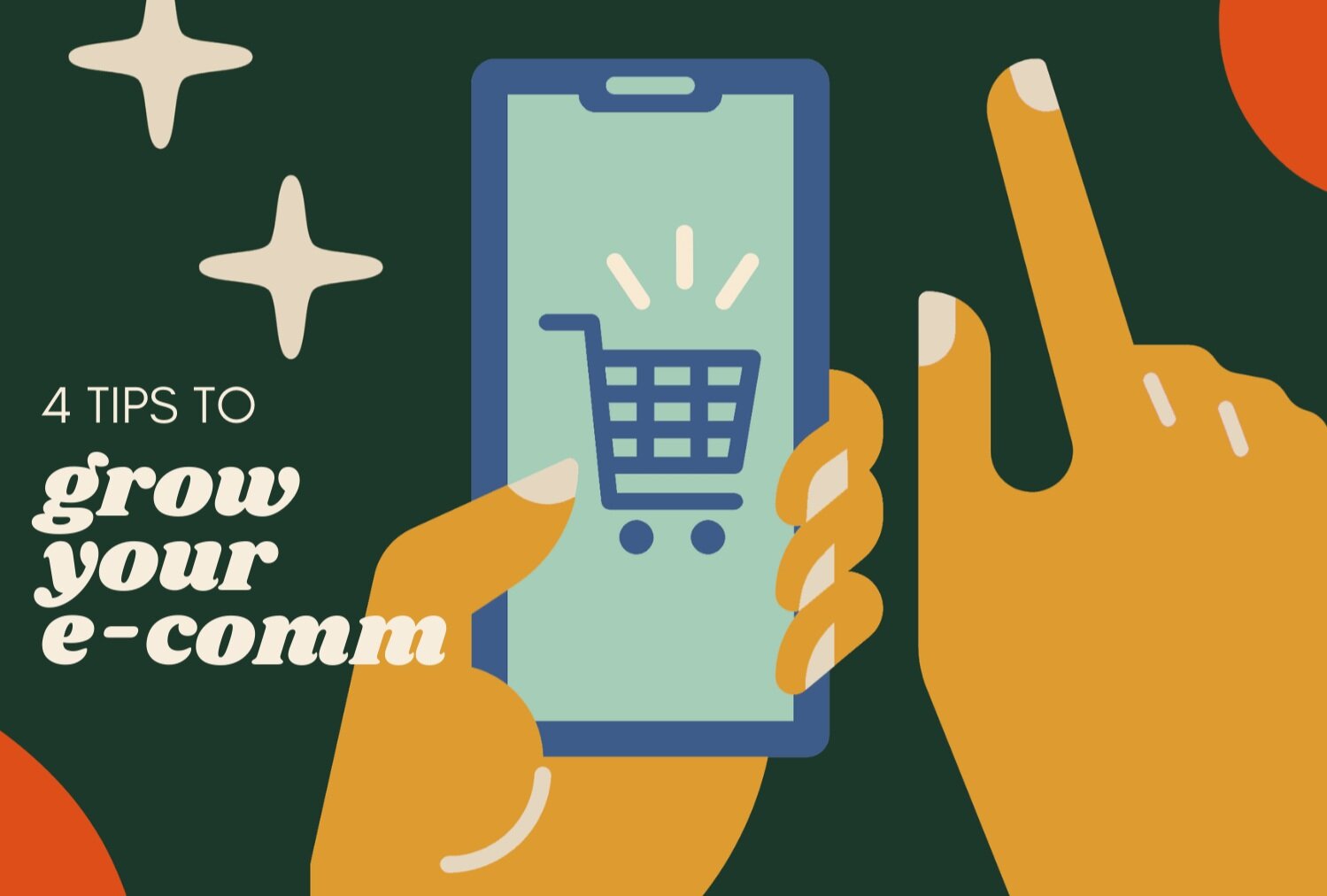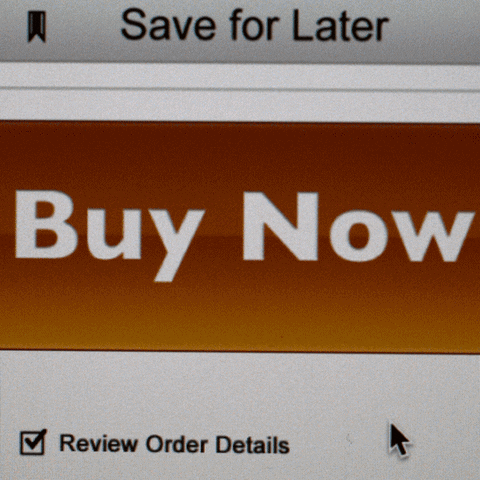4 Tips to Increase Your E-Commerce Conversion in 2021
2020 was quite the year for online sales. While brick-and-mortar shopping was hit very hard, we were inspired by the ingenuity of many brands (including our own clients) to charge into e-commerce when they were previously only sold at retail. In fact, the pandemic accelerated e-commerce growth to levels not previously expected until 2022. So many new consumers broke past barriers of online shopping and many may never go back completely.
According to the U.S. Department of Commerce, Q3 ‘20 retail e-commerce sales reached over $209 million, 14.3% of total retail sales and 36.7% higher than Q3 ‘19.
“We’ve seen e-commerce accelerate in ways that didn’t seem possible last spring, given the extent of the economic crisis,” said Andrew Lipsman, eMarketer principal analyst at Insider Intelligence. “While much of the shift has been led by essential categories like grocery, there has been surprising strength in discretionary categories like consumer electronics and home furnishings that benefited from pandemic-driven lifestyle needs.”
With this incredible forward movement, brands have more opportunity than ever to welcome and woo existing customers and new website visitors. It’s definitely not enough to just be “available” online and because of the low barrier of entry to launch a website, there’s a lot of noise.
How can you stand out, drive meaningful traffic to your website, seamlessly convert visitors into happy paying customers, and turn them into loyal brand advocates? Sounds like magic, but really even just a few upgrades and tweaks can make a big difference.
Here are 4 e-commerce optimizations to consider now:
1. Add an Email & SMS Welcome Automation w/ Offer
Email and SMS automations are some of the first things we recommend to prospective clients, a few include:
1. Welcome Series
2. Cart Abandonment Series
3. Post-purchase Thank you
4. Post-purchase How-to
The goal for the initial signup is to incentivize prospective customers to provide their contact info to create an ongoing relationship outside of 3rd party platforms (we see you Instagram) by providing something of value - discount, information, limited/special access, etc.
The welcome series provides what was offered in exchange for their email/phone number and not much more than that. At this point, it’s less about the brand and more about providing service. However, in subsequent emails within the series, while we’ll remind our new friends about their offer, it’s also an opportunity to share the story behind the brand, their values, and unique offering.
There’s so much to say about SMS but for now, we’ll just say that if you haven’t gotten into the game yet (don’t worry - you’re not alone), we highly recommend it. According to 99 firms, the average open rate for text message marketing campaigns is 98%, compared to a 20% open rate for email marketing campaigns. That’s big.
2.Make Checkout Easier
Think about this statistic: An e-commerce conversion rate of 1-5% is considered the benchmark in 2020.
Yet in order to even get to the above percentage, your visitors have to make it through a few prior steps without friction:
Visit your website
Visit a product page
Add a product to cart
Click to checkout (on average about 50% of visits head to checkout after adding products to cart)
Complete Checkout (aka convert)
To alleviate friction and increase your chances of success, let’s consider adding these elements to your site:
Virtual Customer Service
Implement a Live Chat to support customer service needs. Good service (even virtually) is one way to stand apart in a sea of options and create loyal customers. Most web platforms have built-in options and the ability to integrate with 3rd party apps and communication platforms such as Hubspot.
When integrating, consider a low-key approach to avoid annoying customers with constant pop-ups. Think of it like you would a physical store - do you really want your salesperson running up to your customers and asking how they can help right when they walk in? Probably not. The best salespeople know it’s a dance.
Make Creating Accounts Optional
We all want that valuable customer data BUT it’s never going to be worth making checkout cumbersome in spite of it. If you use Shopify, you have the option to disable, require, or make accounts optional. Offer to create an account after the order is placed for easy shipment tracking. Turn the experience into the ability to provide additional service vs creating more work for them.
More Ways to Pay
Add more ways to pay for products including digital wallets and overtime options (hello new layaway). In fact, “point-of-sale” loan options from companies such as Quadpay, Afterpay, Klarna, and Affirm are seeing triple-digit growth.
“I think this will be as ubiquitous as free shipping,” Brad Lindenberg, co-CEO of Quadpay, told NBC News. “Every site, I think within a matter of a couple of years, will have an option to pay in installments.” source: NBC News
The quick payment options checklist:
Visa
Mastercard
American Express
Discover
Apple Pay
Google Pay
Shop Pay
Paypal
Amazon Pay
Venmo
3. Optimize for Mobile
Based on Shopify data, 70% of shoppers buy on mobile. BUT another interesting fact is that mobile also has a higher cart abandonment rate than desktop. As mobile shopping continues to be a huge focus, especially as more and more consumers are influenced by content and creators on social media - buying right from our devices needs to be easy and enjoyable. Time to level up, friends - mobile shopping isn’t going anywhere. Many web platforms provide options to optimize for mobile, however, if you’ve added apps and other customization over time, it’s worth the investment of working with a qualified developer to help customize the experience you want for your website.
4. Make it Personal
Personalization via email and on-site recommendations continue to play a huge role in helping consumers find what they need - quickly. Everyone wants to feel special and by catering to customer needs with what products and services fit them best based on past shopping and purchasing behavior, brands can alleviate frustration and provide a smooth and enjoyable shopping experience. Here are a few eye-opening stats via Bloomreach:
Marketers see an average increase of 20% in sales when using personalized experiences. (Monetate)
80% of shoppers are more likely to buy from a company that offers personalized experiences. (Epsilon)
44% of consumers say that they will likely become repeat buyers after a personalized shopping experience with a particular company. (Segment)
77% of consumers have chosen, recommended, or paid more for a brand that provides a personalized service or experience. (Forrester)
How much effort and investment are you putting into your e-commerce this year? We’d love to hear what has been some of the struggles and insights you’ve learned so far!




